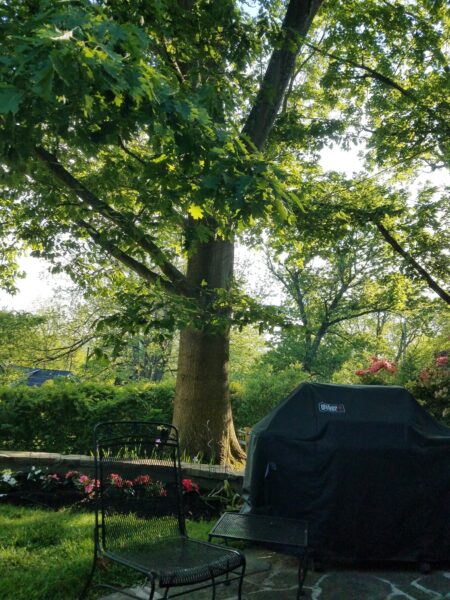Planning a construction project at your house? First, consider your trees. They provide you with beauty, shade, and higher property value, so try to plan around them if you can. Design your new room with a view of your tree and the bird house or the feeder and the squirrel’s acrobatics, and the ever-changing display of leaves and branches throughout the season.
To preserve the trees you already have, protect the roots. Tree roots can be damaged easily in the process of home renovation. Weakened roots can lead to slow death for the tree that can take 1 to 5 years to become evident.
If grading your property is necessary for the project, bring in a tree expert before you begin to move dirt. The roots are close to the surface; about 80 per cent of the roots lie less than 24 inches deep. Roots can be buried too deep or destroyed in the process of grading.
Keep heavy items OFF THE ROOTS. Vehicles and supplies can crush the soil, the roots, and the mycelial structures underground that are essential to tree health.
How to do this? Mark out the “critical rootzones” of your trees, and protect the roots inside the zone. This is an invisible circle that runs just outside the drip line of the tree (just inside the edge of the canopy of the tree.) Directions for how to measure this circle are here.
Put a barrier, such as orange construction fence, around the critical root zone to keep off any vehicle, supplies, or other items. Instruct the crew chief that you want to critical root zone protected. If workers must walk or carry equipment over the critical root zone, it should be covered with planks for plywood to minimize crushng or compacting the tree roots.
Water the tree, 20 gallons slowly every week during the growing season to support its health during construction! Apply 3 inches of mulch over the critical root zone, too, to both retain the moisture and indicate that this area is to be protected.
If, despite all precautions, you notice dead sections or branches in an otherwise healthy tree, this can be a sign of root damage. The dead limbs will need to be pruned out to give the tree the best chance to flourish.
Trees add enormous value to our homes and our community. It is wise to plan ahead to ensure that your tree will survive any construction or renovation coming its way.
This article was written by Nancy Colvin and Carol Newill for Stoneleigh’s Greening & Recycling Committee, and published in the Winter 2023 issue of the Stoneleighite.

to a home, a neighborhood, and our communities’ ecosystem.
